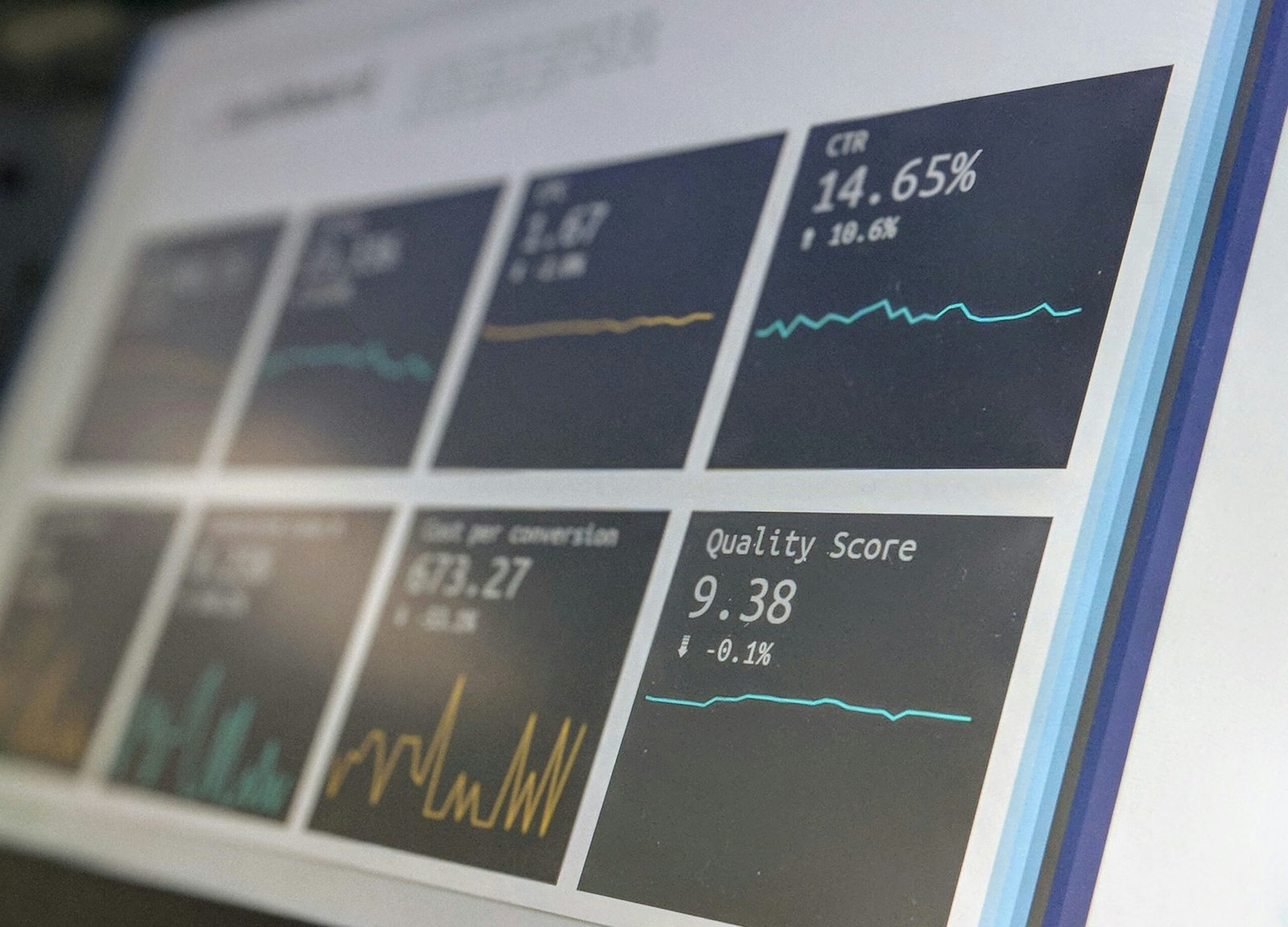
Technical analysis is a method used by traders and investors to analyze and predict future price movements in financial markets. It involves studying historical price and volume data, as well as various technical indicators, to identify patterns and trends that can help inform trading decisions.
Why is technical analysis important in trading? Well, the main idea behind technical analysis is that historical price data can provide valuable insights into future price movements. By analyzing patterns and trends, traders can attempt to predict whether a particular asset’s price is likely to rise or fall, and make informed trading decisions accordingly.
Technical analysis can be applied to a wide range of financial markets, including stocks, commodities, currencies, and cryptocurrencies. It is particularly popular among short-term traders who aim to profit from short-term price fluctuations, but it can also be used by long-term investors to identify entry and exit points for their investments.
Now, let’s dive into the basics of technical analysis. The first thing you need to understand is that technical analysis is based on the assumption that market prices reflect all available information. This means that everything that could potentially affect an asset’s price, such as news, earnings reports, and economic data, is already reflected in its price. Therefore, by studying price patterns and trends, traders can gain insights into the underlying supply and demand dynamics of an asset.
There are several key principles that form the foundation of technical analysis. One of these is the concept of support and resistance levels. Support levels are price levels at which demand is expected to be strong enough to prevent further price declines, while resistance levels are price levels at which supply is expected to be strong enough to prevent further price increases. By identifying these levels on a price chart, traders can anticipate potential turning points in an asset’s price.
Another important principle in technical analysis is the use of technical indicators. These are mathematical calculations that are applied to price and volume data to generate trading signals. There are a wide variety of technical indicators available, ranging from simple moving averages to complex oscillators. Traders use these indicators to confirm or contradict their analysis of price patterns and trends.
In conclusion, technical analysis is a powerful tool that can help traders and investors make informed trading decisions. By studying historical price data and applying various technical indicators, traders can gain insights into the underlying supply and demand dynamics of an asset, and attempt to predict future price movements. In the following sections of this guide, we will delve deeper into the various aspects of technical analysis and provide you with practical tips on how to get started as a beginner.
Technical analysis is a method used by traders and investors to analyze and predict future price movements in financial markets. It involves studying historical market data, such as price and volume, to identify patterns, trends, and signals that can help make informed trading decisions.
This approach is based on the belief that historical price data can provide valuable insights into the behavior of market participants and can be used to predict future price movements. Technical analysts use various tools and techniques to analyze price charts, such as trend lines, support and resistance levels, moving averages, and oscillators.
One of the key principles of technical analysis is that market prices are not random and that they tend to move in trends. By identifying these trends, traders can make educated guesses about the future direction of prices and take appropriate positions to profit from these movements.
Technical analysis can be applied to various financial markets, including stocks, commodities, currencies, and cryptocurrencies. It is widely used by both individual traders and institutional investors to make trading decisions and manage risk.
There are different schools of thought within technical analysis, each with its own set of principles and techniques. Some analysts focus on chart patterns, such as head and shoulders, double tops, and triangles, while others rely more on mathematical indicators, such as the relative strength index (RSI) or the moving average convergence divergence (MACD).
Despite its popularity, technical analysis has its critics. Some argue that it is based on subjective interpretations of historical data and that it does not take into account fundamental factors that can influence market prices. Others believe that technical analysis is a self-fulfilling prophecy, as the actions of traders who rely on technical indicators can create the very patterns they are trying to predict.
Nevertheless, technical analysis remains a widely used tool in the financial industry, as it provides traders with a structured approach to analyzing markets and making trading decisions. It can help traders identify potential entry and exit points, set stop-loss orders to manage risk, and determine the overall trend of a market.
In conclusion, technical analysis is a method used by traders and investors to analyze historical market data and predict future price movements. While it has its critics, it continues to be a valuable tool for many traders in their quest to understand and profit from financial markets.
The Importance of Technical Analysis
Technical analysis is an essential tool for traders and investors for several reasons:
- Identifying Trends: Technical analysis helps identify and confirm trends in the market, whether it’s an uptrend, downtrend, or a sideways market. This information is crucial for traders as it allows them to align their trading strategies with the prevailing market sentiment. For example, if technical analysis indicates a strong uptrend, traders may focus on buying opportunities, while in a downtrend, they may look for short-selling opportunities.
- Timing Entry and Exit Points: By analyzing price patterns and indicators, technical analysis helps traders determine the optimal time to enter or exit a trade. This is critical for maximizing profits and minimizing losses. For instance, technical indicators such as moving averages or oscillators can provide signals when a stock is overbought or oversold, indicating potential reversal points. Traders can use this information to time their trades more effectively and increase their chances of success.
- Managing Risk: Technical analysis provides insights into potential price movements, allowing traders to set stop-loss orders and manage risk effectively. By identifying key support and resistance levels, traders can determine where to place their stop-loss orders to limit potential losses. Additionally, technical analysis can help traders identify price patterns that indicate a potential trend reversal, providing an opportunity to exit a trade before significant losses occur.
- Confirmation of Fundamental Analysis: Technical analysis can be used to confirm or validate the findings of fundamental analysis, providing traders with additional confidence in their trading decisions. While fundamental analysis focuses on evaluating a company’s financial health and prospects, technical analysis focuses on price and volume data. By combining both approaches, traders can make more informed decisions. For example, if fundamental analysis suggests that a stock is undervalued, technical analysis can provide confirmation by indicating that the stock is also showing bullish price patterns or positive momentum indicators.
In conclusion, technical analysis plays a crucial role in the decision-making process of traders and investors. It helps identify trends, time entry and exit points, manage risk, and confirm fundamental analysis. By incorporating technical analysis into their trading strategies, individuals can increase their chances of success in the dynamic and ever-changing financial markets.
Key Concepts in Technical Analysis
Before diving into technical analysis, it’s important to understand some key concepts:
Trends
Trends are the general direction in which a market or an asset’s price is moving. There are three types of trends:
- Uptrend: An uptrend is characterized by higher highs and higher lows. It indicates a bullish market. Traders and investors often look for opportunities to buy during an uptrend, as they anticipate that the price will continue to rise.
- Downtrend: A downtrend is characterized by lower highs and lower lows. It indicates a bearish market. Traders and investors may look for opportunities to sell or short-sell during a downtrend, as they expect the price to continue falling.
- Sideways Trend: A sideways trend, also known as a range-bound market, occurs when the price moves within a horizontal range without a clear upward or downward direction. In a sideways trend, traders and investors may seek to buy at support levels and sell at resistance levels, taking advantage of the price bouncing between these levels.
Support and Resistance
Support and resistance levels are price levels at which the buying or selling pressure is expected to be strong enough to halt or reverse the current trend. These levels are important for traders and investors as they can help identify potential entry and exit points.
- Support: Support is a price level at which demand is strong enough to prevent the price from falling further. It acts as a floor for the price. When the price approaches a support level, traders and investors may expect buying pressure to increase, potentially causing the price to bounce back up.
- Resistance: Resistance is a price level at which supply is strong enough to prevent the price from rising further. It acts as a ceiling for the price. When the price approaches a resistance level, traders and investors may anticipate selling pressure to increase, potentially causing the price to reverse and move lower.
Chart Patterns
Chart patterns are specific formations that appear on price charts and provide insights into future price movements. These patterns are created by the interaction between buyers and sellers in the market and can help traders and investors anticipate potential trend reversals or continuations.
- Head and Shoulders: This pattern indicates a potential trend reversal from bullish to bearish or vice versa. It consists of three peaks, with the middle peak (the head) being higher than the other two (the shoulders). Traders and investors may look for a break below the neckline of the pattern as a signal to sell or short-sell.
- Double Top/Bottom: This pattern suggests a potential trend reversal and is formed when the price fails to break above/below a previous high/low. A double top pattern occurs when the price reaches a resistance level twice and fails to break above it, indicating a potential reversal from bullish to bearish. Conversely, a double bottom pattern occurs when the price reaches a support level twice and fails to break below it, indicating a potential reversal from bearish to bullish. Traders and investors may look for a break below the neckline (in the case of a double top) or above the neckline (in the case of a double bottom) as a confirmation of the pattern.
- Triangles: Triangles are formed by converging trendlines and indicate a period of consolidation before a potential breakout. There are three types of triangles: ascending, descending, and symmetrical. An ascending triangle is characterized by a flat top trendline and a rising bottom trendline, indicating a potential bullish breakout. A descending triangle is characterized by a flat bottom trendline and a declining top trendline, indicating a potential bearish breakout. A symmetrical triangle is characterized by both the top and bottom trendlines converging, indicating a period of indecision in the market. Traders and investors may look for a breakout above the upper trendline (in the case of an ascending triangle), below the lower trendline (in the case of a descending triangle), or in either direction (in the case of a symmetrical triangle) as a signal to enter a trade.
Getting Started with Technical Analysis
Now that you have a basic understanding of technical analysis, here are some steps to help you get started:
Educate Yourself
Start by learning the foundational concepts of technical analysis. There are numerous books, online courses, and resources available that can help you gain a deeper understanding of the subject. Take the time to read books written by renowned technical analysts and experts in the field. These resources will provide you with valuable insights into the various techniques, strategies, and indicators used in technical analysis.
Additionally, consider enrolling in online courses or attending webinars that specifically focus on technical analysis. These educational platforms often offer interactive learning experiences and provide real-time examples and case studies to enhance your understanding.
Choose a Trading Platform
Selecting the right trading platform is crucial for effectively implementing technical analysis in your trading activities. Look for a platform that provides access to a wide range of charts, indicators, and other technical analysis tools. Ensure that the platform is user-friendly and suits your trading style and preferences.
Consider the availability of features such as customizable charts, drawing tools, and the ability to save and analyze multiple chart layouts. It is also important to check if the platform offers real-time data and the ability to set alerts for specific price levels or indicator crossovers.
Study Price Charts
Analyze historical price charts of different financial instruments to identify patterns, trends, and support/resistance levels. Look for recurring patterns such as triangles, head and shoulders, double tops, and double bottoms. Observe how these patterns correspond to price movements and how they have historically signaled potential buying or selling opportunities.
Pay attention to key levels of support and resistance, which are price levels where the buying or selling pressure is expected to be significant. These levels can act as barriers to price movement and often provide valuable insights into potential price reversals or breakouts.
Use Technical Indicators
Technical indicators are mathematical calculations based on historical price and volume data. They help traders identify potential entry and exit points. Some popular indicators include moving averages, relative strength index (RSI), and MACD (Moving Average Convergence Divergence).
Experiment with different indicators and find the ones that align with your trading style and objectives. Understand how each indicator works and how it can be used to generate trading signals. Remember that indicators should not be used in isolation but rather in conjunction with other forms of analysis to confirm or validate potential trading opportunities.
Practice and Refine Your Skills
Start with paper trading or using a demo account to practice your technical analysis skills without risking real money. This will allow you to apply the concepts and strategies you have learned in a simulated trading environment. Keep a trading journal to record your trades and analyze your decision-making process.
Continuously analyze and evaluate your trades to learn from your successes and failures. Identify patterns in your trading behavior and make adjustments accordingly. Refine your technical analysis skills by staying updated with market news, attending webinars or workshops, and participating in trading communities where you can exchange ideas and insights with fellow traders.
Remember that technical analysis is not a guaranteed method for predicting future price movements. It is a tool that provides insights into market behavior and can assist in making informed trading decisions. As with any skill, mastering technical analysis requires practice, patience, and a willingness to continuously learn and adapt.
- #Mumbai
- #Delhi
- #Bangalore
- #Kolkata
- #Chennai
- #Hyderabad
- #Pune
- #Ahmedabad
- #Jaipur
- #Surat
- #Lucknow
- #Kanpur
- #Nagpur
- #Patna
- #Indore
- #Thane
- #Bhopal
- #Visakhapatnam
- #Vadodara
- #Firozabad



